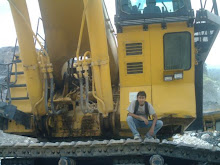 The B-2 Spirit, or stealth bomber, was developed and built by an industry team consisting of Northrop Grumman, Boeing, and Vought Aircraft Industries. Capable of delivering nuclear and conventional munitions, the B-2's primary mission is to attack time-critical targets early in a conflict to minimize an enemy's war-making potential. Twenty-one B-2 aircraft are assigned to the U.S Air Force 509th Bomb Wing at Whiteman Air Force Base, Mo.
The B-2 Spirit, or stealth bomber, was developed and built by an industry team consisting of Northrop Grumman, Boeing, and Vought Aircraft Industries. Capable of delivering nuclear and conventional munitions, the B-2's primary mission is to attack time-critical targets early in a conflict to minimize an enemy's war-making potential. Twenty-one B-2 aircraft are assigned to the U.S Air Force 509th Bomb Wing at Whiteman Air Force Base, Mo.
Capabilities
The B-2 supplies the following capabilities to its two-member crew:
- Power plant: four General Electric F118-GE-100 engines
- Speed and flight range: high-subsonic speeds and long flight range
- Armaments: nuclear and conventional, including gravity bombs and maritime weapons
- Stealthy design: low-observability characteristics to avoid radar detection
B-2 Design
The B-2 bomber has the ability to elude radar-guided air defenses due to its low-observable characteristics, and has sufficient structural capacity to deliver large payloads at long range. The aircraft incorporates the following features:
- Advanced designs and technologies that make unprecedented use of composite materials
- Product assembly and finishing that meet extraordinary tolerances and quality standards
- Final production tooling implemented directly from the computer-aided design (CAD) system without the use of development tooling
Boeing's Role
Boeing in Seattle is currently doing work on the B-2's smart bomb rack and SATCOM radio. Boeing previously provided the following components:
- Primary structural components -- the outboard wing and aft-center sections
- Fuel systems
- Weapons-delivery system
- Landing gear
Milestones
- 1988: the first B-2 was completed
- 1989: made its first flight July 17
- 1991: the Air Force and B-2 industry team received the Collier Trophy
- 1993: the B-2 entered the U.S. Air Force operational fleet Oleh:boeing.com




0 komentar:
Posting Komentar